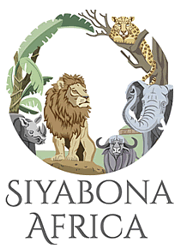
About Southern Mopaneveld
Engelhard Dam
Letaba Area
Letaba Camp to Mozambique
Letaba to Mopani
Letaba to Olifants
Olifants Area
Palaborwa Gate Area
Phalaborwa to Letaba
Phalaborwa to Mopani
See Kruger Park Olifants Area Self-drive Map

Elephant and buffalo are usually seen drinking at the river during the middle of the day while at least one pride of lions is active in the area.
Stop on the Letaba River Bridge for a leg-stretch and to study the river banks and look at the water birds. One is allowed out of one's vehicle on the demarcated zone on the bridge, which was completely engulfed during the 2000 floods.
The Main Mopani Road (H1-6)
There is usually excellent game viewing on the H1-6 between Letaba Rest Camp and the Letaba River Bridge as the road closely follows the broad, sandy Letaba River bed. There are several loop roads off the H1-6 with expansive views over the river. Often there are baboons along this stretch of the road, browsing in the trees, scrounging around on the ground or grooming themselves.

The high-water mark of the floods has been signposted on both sides of the river and it is a wonder to imagine the volume of water that must have come downstream that fateful February. The strong smell at the bridge is from a colony of free-tail bats that nest in the girders. They are usually seen only at twilight and are often hunted by rarer raptors such as the bat hawk and Eurasian hobby.
From Letaba Bridge to Twisappel Water Hole, the H1-6 goes through alternating tree and shrub mopane with large pockets of grassland. Twisappel Water Hole has a large surrounding vlei. This is the ideal habitat for waterbuck. Twisappel usually retains water in winter and is one of the main sources of dry season water for elephant, buffalo and other game in the southern mopaneveld.
North of Twisappel, animal sightings become less common as the carrying capacity of the mopaneveld cannot support large herds of animals.

That is not to say one won't see anything interesting. Keep a sharp look out on the H1-6 in the vicinity of the turn-off to Giriyondo Border Post (H15) for small groups of tsessebe. This is probably the best place in Kruger to see these rather awkward-looking, hump-shouldered antelope.
Despite their ungainly posture, they are faster than any other antelope, and are capable of reaching speeds of over 100km/h over short distances. They are shy animals sometimes found in association with the zebra and wildebeest that are regularly seen along this road.
Another rare animal to look out for in this area is the roan antelope. It appears to be restricted to the eastern mopaneveld, whereas its 'cousin', the sable, is found more in the west. There are often scattered herds of roan north of the Letaba River, where they seek out the taller grasses in lightly wooded savanna.
The law of unintended consequences has manifested itself in Kruger over the provision of water holes. Kruger managers now believe that the expansion of water holes in Kruger has been detrimental to roan antelopes in that it has favoured elephant, zebra and wildebeest which have displaced roan from their traditional territory.
The H1-6 continues along the flat, basalt plains dominated by shrub mopane. After soaking summer rains, a number of pans form in the area - the most prominent being the regular elephant drinking holes, Middelvlei and Nshawu. Be warned that one may see nothing for long stretches of this road, so a better alternative is to take the dusty Tsendze Loop Road (S48).Tsendze Loop (S48)
The Tsendze Loop Road is a 17-kilometre detour off the H1-6 that provides some habitat variation by dipping out of the mopaneveld into the riverine bush along the Tsendze watercourse. The river twists and turns, which may account for its name.According to ethnographer HP Junod, it is based on the Shangaan tsendzeleka, which means "to ramble round like someone lost in the bush". There are usually plenty of elephant and buffalo close to the river. This road may be closed after heavy rains.White rhinos are, of course, not white at all but are so called because of the misinterpretation of the Dutch word for "wide" which was used to describe the lip of the grazing variety of rhino. White rhino are usually associated with southern Kruger. However, a small population of these great grey grazers has also been established in the north, after a core group of 12 was released here during the 1960s. The highest concentration of white rhino in the mopaneveld is to be found in the flatlands between the Tsendze and Shingwedzi rivers.
South of Mopani, one can see the escarpment to the west (and the landmark hill of Masorini near Phalaborwa Gate), the Lebombo to the east and the Olifants Gorge in the Lebombo Mountains to the south-east. The Confluence is a scenic viewpoint along the Tsendze, while Mooiplaas Picnic Spot is a welcome refreshment stop well shaded by apple-leaf trees. Cold drinks and firewood are for sale and gas braais may be hired at the site, which has toilet facilities.
 A green and thriving oasis, Letaba Rest Camp offers comfortable accommodation in Kruger Park with excellent Elephant and bird viewing opport...
A green and thriving oasis, Letaba Rest Camp offers comfortable accommodation in Kruger Park with excellent Elephant and bird viewing opport... Mopani Rest Camp is the newest of all the Kruger Park rest camps and commands a spectacular view over the Pioneer Dam. Mopani Rest Camp Faci...
Mopani Rest Camp is the newest of all the Kruger Park rest camps and commands a spectacular view over the Pioneer Dam. Mopani Rest Camp Faci...